In the depths of the dense jungles of Mesoamerica, a civilization unparalleled in its agricultural knowledge thrived: the Mayans. Their sophisticated understanding of the land and its resources allowed them to develop advanced agricultural techniques that sustained their society for centuries. From slash and burn agriculture to the intricate construction of chinampas, the Mayans employed a variety of innovative methods to cultivate their crops. These ancient farming practices were not only highly effective, but also deeply sustainable, ensuring the long-term viability of their land. Join us as we delve into the remarkable world of Mayan agriculture, exploring their traditional farming methods, advanced techniques, and the enduring impact they had on Mayan society. Prepare to be astounded by the intricate web of knowledge and ingenuity that allowed the Mayans to thrive in harmony with the land.
Contents
- Traditional Mayan Farming Methods
- Advanced Agricultural Practices
- Sustainable Farming Techniques
- The Role of Maize in Mayan Agriculture
- Impact of Agriculture on Mayan Society
- Mysteries and Discoveries
- Modern Applications of Mayan Farming Techniques
- Conclusion
-
Frequently Asked Questions
- 1. What is slash and burn agriculture?
- 2. How did the Mayans practice terracing?
- 3. What are chinampas and how were they used in Mayan farming?
- 4. What is intercropping?
- 5. How did Mayans use crop rotation?
- 6. How did Mayans manage soil fertility?
- 7. What was the role of water management in Mayan agriculture?
- 8. What is agroforestry and how did Mayans practice it?
- 9. What is mulching and how did the Mayans use it?
- 10. How did agricultural practices influence Mayan economic development?
- References
-
Frequently Asked Questions
- 1. How did the Mayans practice slash and burn agriculture?
- 2. What is the purpose of terracing in Mayan farming?
- 3. How did the Mayans utilize chinampas in agriculture?
- 4. What is intercropping in Mayan agriculture?
- 5. How did the Mayans implement crop rotation?
- 6. What were the soil fertility management techniques used by the Mayans?
- 7. How did the Mayans manage water in their agriculture?
- 8. What is agroforestry and how did the Mayans engage in it?
- 9. What role did mulching play in Mayan farming?
- 10. What was the impact of agriculture on Mayan economic development?
- References
- Read More
Traditional Mayan Farming Methods
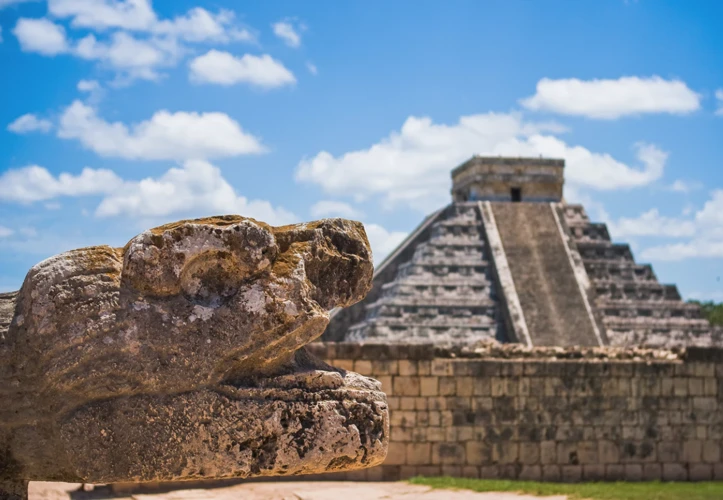
The traditional farming methods employed by the Mayans were a testament to their deep understanding of the land and its resources. Slash and Burn Agriculture, one of their most significant techniques, involved clearing a patch of land by cutting and burning the vegetation. The ashes left behind provided essential nutrients for the soil, creating a fertile area for cultivation. Terracing was another integral practice, especially in hilly regions. The Mayans constructed stepped platforms on slopes, preventing erosion and enabling efficient water management. Chinampas, floating gardens created on shallow lakes, were yet another innovative method. By forming rafts made of intertwined trees and plants, the Mayans were able to grow crops in water, maximizing arable land. These traditional farming practices highlight the ingenuity and adaptability of the Mayan civilization, allowing them to navigate and thrive in diverse landscapes.
1. Slash and Burn Agriculture
Slash and Burn Agriculture was a fundamental farming technique employed by the Mayans. This method involved clearing a patch of land by cutting down vegetation and then burning it. The ashes left behind provided vital nutrients that enriched the soil, making it fertile for crop cultivation. The process began by carefully selecting an area and allowing the vegetation to grow for several years. Once the plants reached a sufficient height, they were systematically cut down and left to dry. In preparation for the burn, the dried vegetation was piled into large heaps, known as “slash piles.” The Mayans then ignited these piles, allowing the fire to spread and consume the vegetation. The heat from the controlled burn not only cleared the land but also released valuable nutrients trapped in the biomass. Once the burn was complete, the ashes were spread across the field, ensuring nutrient-rich soil for planting crops. This sustainable and cyclical approach to land management allowed the Mayans to effectively utilize their resources while minimizing their impact on the environment. Today, slash and burn agriculture continues to be practiced by some indigenous communities, highlighting the enduring legacy of this ancient Mayan farming technique.
2. Terracing
Terracing was a sophisticated farming technique employed by the ancient Mayans, particularly in hilly regions. This method involved constructing stepped platforms on sloping terrain to create flat surfaces for farming. The Mayans used their knowledge of engineering and agriculture to carve out these terraces, which helped prevent soil erosion and maximize the use of limited arable land. The terraces acted as retaining walls, holding the soil in place and preventing valuable topsoil from being washed away during heavy rains. This method also facilitated effective water management, as the flat surfaces allowed for the controlled flow and distribution of water across the terraces. The Mayans constructed these terraces by hand, utilizing stone walls and other natural materials found in their surroundings. They carefully engineered the terraces to ensure that each level received adequate water and sunlight. Additionally, terracing minimized the risk of water runoff, preserving essential nutrients in the soil and maintaining its fertility. This ingenious farming practice allowed the Mayans to successfully cultivate various crops, even in areas with challenging terrain. Terracing exemplifies the Mayans’ mastery over the land and their ability to adapt to diverse environments, reinforcing their reputation as skilled agriculturalists and architects. To this day, the remnants of these terraces can still be seen in the archaeological sites of Mayan cities, serving as a testament to their advanced agricultural techniques and engineering prowess.
3. Chinampas
Chinampas, an ingenious agricultural technique used by the Mayans, revolutionized farming in the region. These floating gardens were created on shallow lakes, providing the Mayans with a sustainable and productive way to cultivate crops. The process of building chinampas involved weaving together intertwined trees, reeds, and other plants to form rafts. The rafts were anchored to the lakebed with wooden stakes, ensuring stability. The nutrient-rich mud from the lake bottom was then piled onto these rafts, creating a fertile and buoyant platform for growing crops. The Mayans took advantage of the natural resources around them, cultivating various crops such as maize, beans, squash, and avocados. The interconnected construction of the chinampas enabled efficient water circulation and drainage, minimizing the risk of flooding and water stagnation. This technique not only expanded agricultural land but also increased crop yields, allowing the Mayans to sustain their growing population. The innovative approach of the chinampas showcases the Mayans’ ability to adapt to their environment and maximize available resources to support their society and ensure food security.
Advanced Agricultural Practices
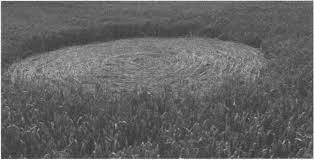
The Mayans were masters of advanced agricultural practices that allowed them to maximize their crop yields and ensure the long-term health of their lands. Intercropping was one such technique, where multiple crops were grown together in close proximity. This practice not only made efficient use of space but also created mutually beneficial relationships between the plants. Crop rotation was another key strategy employed by the Mayans to maintain soil fertility. By alternating the crops grown in specific areas, they prevented nutrient depletion and reduced the risk of pests and diseases. Another essential aspect of Mayan agriculture was soil fertility management. The Mayans understood the importance of replenishing the soil with nutrients, and they did so by using organic materials such as manure and compost. These advanced agricultural practices showcase the Mayans’ deep understanding of ecological balance and their ability to harness nature’s processes to cultivate thriving crops.
4. Intercropping
Intercropping was a crucial agricultural technique employed by the Mayans to maximize their crop yields and exploit the different growth patterns of various plants. With intercropping, the Mayans would simultaneously cultivate multiple crops in the same field, taking advantage of their complementary characteristics. By combining plants with diverse attributes, such as one crop with deep roots and another with shallow roots, the Mayans were able to optimize resource utilization and increase overall productivity. This method also helped control pests and diseases, as different plant combinations acted as natural repellants or attracted beneficial insects. Imagine a field where maize, beans, and squash coexisted harmoniously, each plant supporting the growth of the others through complementary nutrient requirements and shade regulation. Intercropping demonstrates the Mayans’ astute understanding of ecological interactions and their ability to harness nature’s intricate relationships to their advantage. It’s a practice that epitomizes the sustainable and efficient agricultural techniques of this ancient civilization.
5. Crop Rotation
Crop rotation was a critical element of the Mayan agricultural practices, ensuring long-term soil fertility and optimal yields. The Mayans understood that continuous cultivation of the same crops can deplete soil nutrients and lead to decreased productivity. To combat this, they implemented crop rotation, a technique that involved systematically alternating the types of crops grown in specific plots of land over time. By doing so, they could optimize nutrient cycles, manage pests, and prevent soil erosion.
The Mayans followed a cyclical pattern where they divided their fields into different plots, each designated for a specific crop. They would rotate between staple crops such as maize, beans, squash, and amaranth. For example, in one cycle, a plot would be used for growing maize, followed by beans and then squash. In the next cycle, they would switch the crops around.
This practice had multiple benefits. Firstly, different crops have varied nutrient requirements, and by rotating crops, the Mayans could ensure that the soil replenished the necessary nutrients for each specific crop. Secondly, crop rotation disrupted pest and disease cycles. Pests and diseases that targeted a specific crop would struggle to survive when the crop was not present in a given plot. Additionally, by diversifying the crops grown, the Mayans reduced the risk of total crop failure due to a single pest or disease outbreak.
The Mayans also incorporated fallow periods into their crop rotation system. Fallow periods involved leaving a plot of land uncultivated for a certain period, allowing it to regenerate its nutrients and regain its fertility. This practice ensured that the land remained productive over the long term.
Crop rotation played a crucial role in sustaining the Mayan agricultural system by maintaining soil fertility, preventing pest infestations, and reducing the risk of crop failure. By implementing these well-thought-out practices, the Mayans were able to harness the land’s resources efficiently and ensure consistent harvests year after year.
6. Soil Fertility Management
Soil fertility management was of paramount importance in Mayan agriculture, as it played a crucial role in sustaining crop production. The Mayans employed various techniques to maintain and enhance the fertility of their soils, ensuring bountiful harvests for their communities. They understood the significance of replenishing essential nutrients that were depleted after continuous cultivation. To achieve this, they utilized crop rotation, a practice where different crops were grown in succession on the same plot of land. By alternating crops with varying nutrient requirements, such as maize, beans, and squash, the Mayans could optimize nutrient uptake and minimize depletion. Additionally, the incorporation of organic matter was integral to their soil fertility management. They employed composting, a process of decomposing organic waste materials, to produce nutrient-rich compost that was then added to the soil. This not only increased nutrient levels but also improved soil structure and water-holding capacity. The Mayans recognized the importance of cover cropping, which involved growing certain plants solely for the purpose of enriching the soil. These cover crops, such as legumes, were known for their ability to fix atmospheric nitrogen and replenish soil nutrients. By implementing these soil fertility management practices, the Mayans demonstrated their advanced understanding of agricultural sustainability and the interconnectedness between soil health and crop productivity. The result was thriving farmlands that could support their growing population and ensure food security for generations to come.
Sustainable Farming Techniques
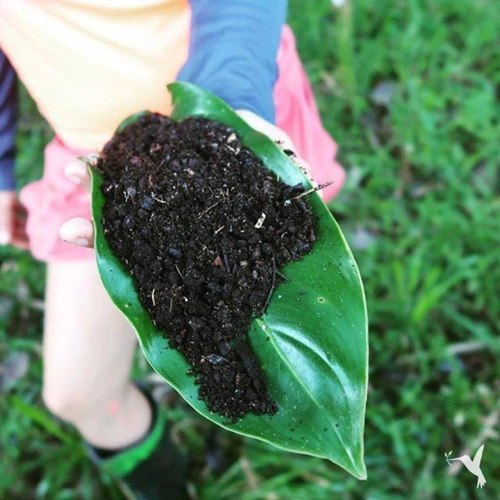
The Mayans were pioneers in sustainable agriculture, implementing techniques that prioritized long-term ecological balance. Water Management played a crucial role in their sustainable practices. They developed intricate canal systems and reservoirs to collect and distribute water efficiently. Agroforestry was another sustainable technique where trees were strategically planted alongside crops, providing shade, preventing soil erosion, and diversifying the ecosystem. Mulching, the practice of covering the soil surface with organic materials, helped retain moisture, control weeds, and enhance soil fertility. These sustainable farming techniques not only ensured the productivity of the land but also fostered a harmonious relationship between the Mayans and their environment, showcasing their deep ecological knowledge.
7. Water Management
Water management played a crucial role in Mayan agriculture, ensuring the success and productivity of their crops. The Mayans developed ingenious techniques to harness and control water resources. Through the construction of reservoirs and canals, they were able to capture and store rainfall for irrigation purposes. These reservoirs, known as aguadas, were strategically positioned to collect and retain water during the rainy season, providing a sustainable water supply during dry periods. The canals were carefully designed to distribute water evenly throughout the agricultural fields, ensuring that every plant received the necessary moisture for optimal growth. In addition to these structures, the Mayans also implemented terracing techniques in areas with uneven terrain. By creating step-like platforms, they effectively controlled water runoff, preventing erosion and maximizing water absorption. The Mayans’ mastery of water management allowed them to manipulate and utilize their natural resources to support their agricultural endeavors, leading to bountiful harvests and a thriving civilization.
8. Agroforestry
Agroforestry was a remarkable agricultural practice employed by the Mayans, showcasing their deep connection with the environment. In agroforestry, trees and crops were intercropped together, creating a mutually beneficial relationship. The Mayans strategically selected tree species that provided shade, protected the soil from erosion, and enriched its fertility through leaf litter decomposition. At the same time, the shade provided by the trees helped regulate temperature and retain moisture for the understory crops. This intricate system not only enhanced biodiversity but also improved crop productivity, as different plants utilized different levels of sunlight and nutrients. The Mayans skillfully managed these agroforestry systems, creating a harmonious and sustainable balance between trees and agricultural crops. This practice not only ensured a diverse food supply but also contributed to the overall health and resilience of the Mayan farming communities. Agroforestry continues to be recognized today as an effective method for sustainable land use, making it a valuable lesson we can learn from the Mayans.
9. Mulching
Mulching was a crucial agricultural technique utilized by the Mayans to enhance soil fertility and moisture retention. They would spread a layer of organic materials such as leaves, straw, or compost on the soil surface, acting as a protective barrier. This layer served multiple purposes, from suppressing weed growth to regulating soil temperature. By reducing evaporation, mulching helped conserve water, ensuring that it reached the plant roots. Additionally, as the organic matter slowly decomposed, it enriched the soil with essential nutrients, creating a favorable environment for crop growth. The Mayans also incorporated crop residues as mulch, further promoting soil health and productivity. This innovative approach to mulching not only improved the overall efficiency of their farming practices but also contributed to the sustainability and long-term viability of their agricultural systems. The knowledge and implementation of mulching by the Mayans demonstrated their astute understanding of the intricate relationship between soil health and successful crop cultivation.
The Role of Maize in Mayan Agriculture
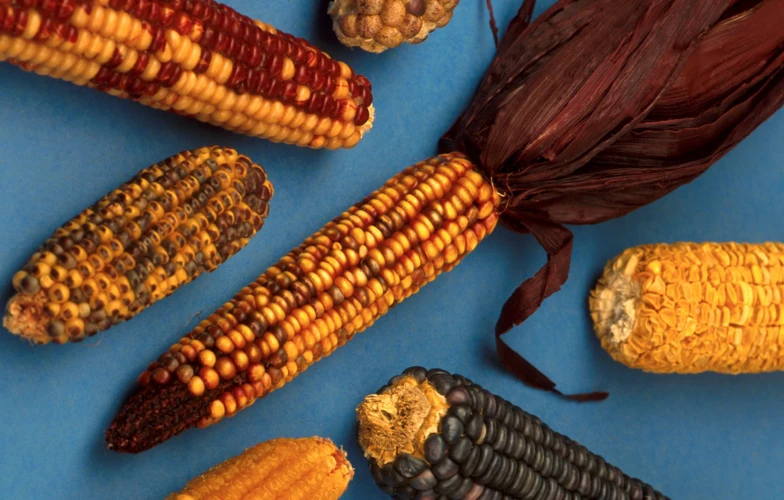
Maize, also known as corn, played a central role in Mayan agriculture, serving as a staple crop and a symbol of sustenance and life. The Mayans cultivated several varieties of maize, each with its unique characteristics and uses. This versatile grain provided a significant portion of the Mayan diet, offering vital carbohydrates, proteins, and essential nutrients. Maize was consumed in various forms, including as tortillas, tamales, and pozole, which were a part of everyday meals. The cultivation of maize was intricately tied to the Mayan calendar and religious beliefs, with specific planting and harvesting ceremonies dedicated to this sacred crop. To maximize its productivity, the Mayans implemented advanced agricultural techniques such as intercropping and crop rotation, ensuring the soil’s fertility and preventing the depletion of nutrients. The cultivation of maize not only sustained the Mayan population but also played a crucial role in their cultural identity and economic prosperity. The profound significance of maize in Mayan agriculture reflects the deep connection between the Mayan people and the land they cultivated, shaping their way of life for generations to come.
Impact of Agriculture on Mayan Society
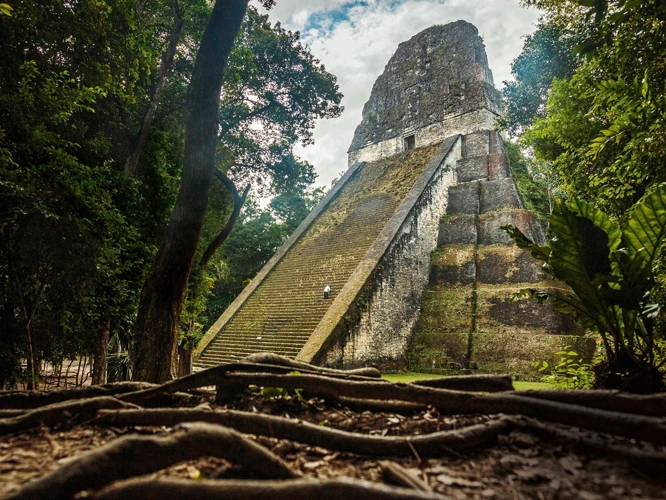
The impact of agriculture on Mayan society was profound and multifaceted. Food security was one of the most significant outcomes. The advanced agricultural techniques employed by the Mayans ensured a reliable and plentiful food supply, supporting a growing population and reducing the risk of famine. This allowed for the development of complex social organization and hierarchies within Mayan society. Agriculture played a pivotal role in shaping the economic development of the civilization. Surpluses of crops such as maize allowed for trade and specialization, leading to the growth of a diverse market economy. The abundance of agricultural resources also fostered the emergence of extensive trade networks, contributing to the cultural exchange and interconnectedness of the Mayans. The agricultural practices of the Mayans were instrumental in the flourishing of their civilization, shaping their social, economic, and cultural landscapes.
10. Food Security
– Mayan agriculture played a crucial role in ensuring food security for their society. Their advanced farming methods allowed them to cultivate a wide array of crops, providing sustenance for their population. Through techniques like slash and burn agriculture, terracing, and chinampas, the Mayans were able to maximize the productivity of their land and diversify their food sources. By clearing land and enriching the soil, they created fertile grounds that could support the growth of staple crops such as maize, beans, and squash. This agricultural diversity was essential in safeguarding against crop failure and ensuring a stable food supply.
– The Mayans also practiced effective water management strategies, which further contributed to food security. They constructed intricate systems of canals, reservoirs, and dams to control water flow and preserve it for irrigation during dry periods. This enabled them to cultivate crops year-round, reducing the risk of food scarcity.
– Additionally, the Mayans stored surplus food in granaries, allowing them to stockpile reserves in case of emergencies or lean harvest seasons. These well-preserved grains and other foodstuffs served as a safety net, ensuring that the population had access to sustenance even during times of scarcity.
– The emphasis on food security within Mayan society can be linked to their complex social organization. Elaborate hierarchies and systems of governance were in place to manage the distribution of food resources. The rulers and nobility played a critical role in overseeing the allocation of food and ensuring that everyone had access to an adequate supply. This hierarchical structure provided stability and security, reducing the risk of food-related conflicts or social unrest.
Food security was paramount for the Mayans, and their innovative agricultural practices and social organization were key factors in achieving this goal. Through careful cultivation, efficient water management, and strategic storage, they were able to maintain a sustainable and reliable food supply for their civilization. The lessons learned from their practices can still be relevant in addressing food security challenges today.
The social organization of the Mayan civilization was intricately connected to their agricultural practices. revolved around the concept of communal farming and collective responsibility. The Mayans had a hierarchical society, with leaders and nobles overseeing the distribution and management of agricultural resources. They designated specific plots of land to individual families for cultivation, ensuring equitable access to resources. Additionally, they practiced a form of labor exchange known as “mink’a,” where community members would come together to collectively work on agricultural tasks. This communal effort fostered a sense of unity and cooperation within Mayan society, reinforcing social bonds. The organization of their agricultural practices allowed for the efficient allocation of resources and created a social framework that promoted cooperation and mutual support. Through their collective farming efforts, the Mayans not only sustained their civilization but also built strong social structures that contributed to their overall success and resilience.
12. Economic Development
Economic development was a fundamental aspect of Mayan society, driven in large part by their advanced agricultural practices. The Mayans implemented a highly efficient system of food production and management, which resulted in surplus crops. This surplus not only sustained the population but also allowed for trade and economic growth. The Mayans cultivated a diverse range of crops, including maize, beans, squash, and cacao, which were highly valued commodities. The abundance of agricultural resources enabled the development of specialized craftsmen and artisans, who created intricate goods such as pottery, jewelry, and textiles. These products were then traded within the Mayan city-states and with neighboring societies, further fueling economic prosperity. The surplus agricultural production also contributed to the establishment of intricate market systems and enabled the development of a complex, hierarchical society. The economic success of the Mayan civilization can be attributed to their mastery of advanced agricultural techniques, which provided the foundation for their thriving trade networks and prosperous economy.
Mysteries and Discoveries

The mysteries and discoveries surrounding Mayan agriculture continue to captivate and intrigue researchers to this day. One area of ongoing investigation is the usage of glyphosate, a widely used herbicide, by the Mayans. Scholars are delving into the potential impacts of glyphosate on the agricultural practices of this ancient civilization and how it may have influenced crop yields and soil fertility. Additionally, archaeological excavations are unearthing new insights into the sophisticated infrastructure and irrigation systems implemented by the Mayans. These excavations shed light on the intricate methods of water management employed by the Mayans, highlighting their ability to harness and manipulate water sources for agricultural purposes. The concept of ecological resilience is a subject of continued exploration. Researchers are studying the ways in which the Mayans cultivated diverse crops, implemented agroforestry techniques, and utilized natural resources to build a sustainable agricultural system that withstood the test of time. These ongoing investigations are unearthing a wealth of knowledge about the advanced agricultural techniques of the Mayans and the secrets they held for centuries.
13. Research on Glyphosate Usage
Research on glyphosate usage has been a topic of great interest and concern in recent years. Glyphosate is a widely used herbicide that has faced scrutiny due to its potential environmental and health impacts. Studies have been conducted to examine the effects of glyphosate on ecosystems, soil health, and human health. These research efforts aim to understand the long-term consequences of glyphosate usage and inform sustainable agricultural practices. Some studies have suggested a link between glyphosate exposure and adverse effects on non-target organisms, such as pollinators and aquatic life. Researchers have also investigated the persistence of glyphosate in soil and its potential to affect microbial communities and nutrient cycling. Studies have explored the potential risks of glyphosate residues in food and the possible association with human health issues. The research on glyphosate usage provides valuable insights into the need for cautious and responsible use of herbicides in agricultural practices, as well as the importance of exploring alternative approaches that prioritize environmental and human well-being.
14. Archaeological Excavations
Archaeological excavations have played a crucial role in understanding the advanced agricultural techniques of the Mayans. Through careful examination of ancient sites, researchers have unearthed valuable insights into the farming methods employed by this ancient civilization. These excavations have revealed evidence of extensive irrigation systems, agricultural terraces, and the cultivation of various crops such as maize, beans, and squash. By studying the remnants of farming tools, pottery, and botanical remains, archaeologists have pieced together a comprehensive picture of the sophisticated agricultural practices of the Mayans. These excavations have not only shed light on the specific techniques used, but also provided valuable information about the scale and organization of agriculture within Mayan society. The discoveries made through archaeological excavations have deepened our appreciation for the ingenuity and resourcefulness of the Mayans, further highlighting their mastery of sustainable agriculture.
15. Ecological Resilience
One fascinating aspect of Mayan agriculture was its ecological resilience. The Mayans had a deep understanding of the delicate balance between humans and the environment, and their farming methods were designed to maintain that equilibrium. By implementing techniques such as crop rotation, intercropping, and terracing, they were able to mitigate the risks of crop failure and ensure the long-term sustainability of their agricultural systems. Crop rotation involved the systematic rotation of crops in a single plot of land, which helped prevent soil nutrient depletion and pest infestations. Intercropping, on the other hand, involved growing different crops together, which provided natural pest control and a more diverse yield. Additionally, terracing allowed the Mayans to effectively manage water runoff and prevent soil erosion in hilly areas, preserving the fertility of the land. These practices exemplified the Mayans’ deep respect for their environment and their keen ability to adapt to changing conditions, making their agricultural systems remarkably resilient. Their emphasis on ecological resilience serves as an important lesson for modern-day sustainable farming practices as we strive to coexist harmoniously with the natural world.
Modern Applications of Mayan Farming Techniques
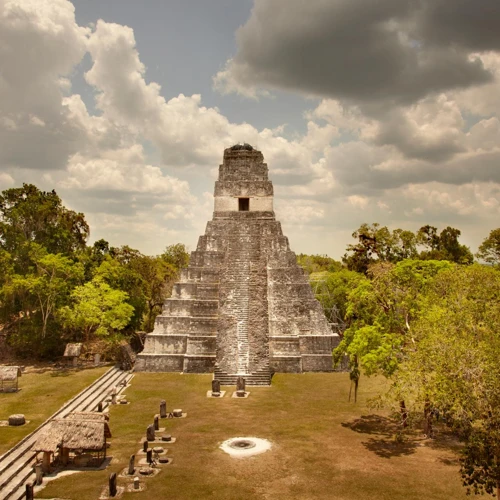
The legacy of Mayan agricultural techniques continues to inspire and shape modern farming practices, as sustainability and ecological resilience gain prominence. Today, many farmers and organizations are adopting sustainable agriculture movements that draw inspiration from the Mayans. These movements prioritize organic farming, crop diversity, and soil health, echoing the Mayans’ emphasis on maintaining a balanced ecosystem. Additionally, the principles of permaculture align closely with the Mayan approach to agriculture, incorporating concepts such as agroforestry, crop rotation, and water management. The Mayans’ innovative use of chinampas has also influenced the practice of biointensive farming, which focuses on maximizing yields in small areas while minimizing resource consumption. By embracing these modern applications, we honor the wisdom of the Mayans and embrace their sustainable and efficient farming methods, ensuring a brighter and more resilient future for our agricultural systems.+
16. Sustainable Agriculture Movements
Sustainable agriculture movements have emerged as a response to the environmental challenges and concerns of modern farming practices. These movements draw inspiration from the wisdom of ancient civilizations like the Mayans, who utilized innovative and ecologically sound farming techniques. The Mayans’ deep understanding of the land, their emphasis on soil fertility management, and their use of diverse planting methods have influenced contemporary sustainable agriculture practices. Permaculture, for example, is a sustainable farming system that aims to mimic the patterns and resilience of natural ecosystems. It incorporates principles such as biodiversity, intercropping, and water conservation. Another approach gaining traction is biointensive farming, which focuses on maximizing yields through intensive planting while minimizing the use of external inputs. These sustainable agriculture movements draw inspiration from the Mayans’ holistic approach to farming and their emphasis on long-term ecological balance. By adopting these methods, we can work towards a more sustainable future that respects the environment and ensures food security for generations to come.
17. Permaculture
Permaculture, the innovative approach to sustainable farming, draws inspiration from the Mayan agricultural practices. This holistic design system aims to create self-sufficient and regenerative ecosystems that mimic natural patterns. In permaculture, the emphasis is placed on optimizing the relationships between plants, animals, soil, water, and humans. By implementing diverse plant species, companion planting, and crop rotation, permaculture promotes biodiversity and resilience. It also integrates techniques such as water harvesting, mulching, and composting to enhance soil fertility and moisture retention. The Mayan farming methods, with their focus on intercropping and soil fertility management, align closely with the principles of permaculture. This approach encourages individuals and communities to embrace sustainable farming practices, conserve natural resources, and nurture the ecological balance. Today, permaculture enthusiasts continue to draw inspiration from the ancient Mayan techniques to create harmonious and sustainable food systems that benefit both people and the planet.
18. Biointensive Farming
Biointensive farming is a modern application of agricultural techniques inspired by the sustainable practices of the Mayans. This method focuses on maximizing crop yields while minimizing the use of external inputs. The key principles of biointensive farming include double-digging, companion planting, and composting. Double-digging involves digging trenches and loosening the soil to enhance aeration and root penetration. Companion planting involves strategically planting different crops together to promote symbiotic relationships and enhance nutrient uptake. Additionally, intercropping and crop rotation are commonly practiced in biointensive farming to maximize space utilization and minimize pest and disease pressure. Composting plays a crucial role in providing nutrient-rich soil amendments that replenish the soil’s fertility. By adopting biointensive farming techniques, farmers can improve soil quality, reduce water consumption, and enhance biodiversity on their farms. This approach aligns with the Mayans’ emphasis on sustainability and the preservation of natural resources. It also contributes to the broader movement towards regenerative and eco-friendly agriculture in the modern world.
Conclusion
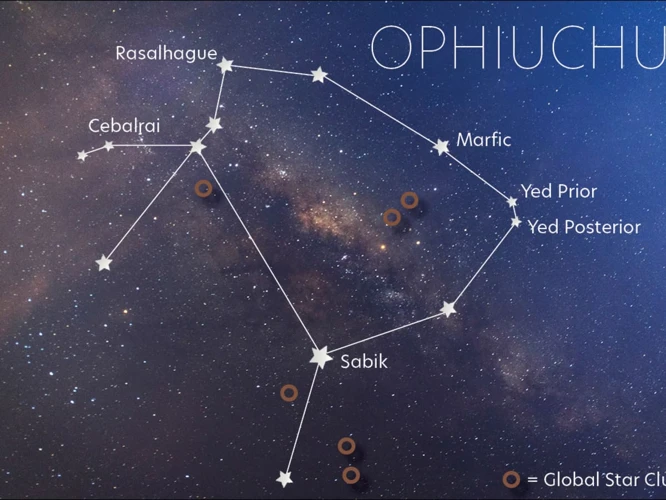
As we reach the of our exploration into the advanced agricultural techniques of the Mayans, it is clear that their farming practices were nothing short of extraordinary. The Mayans possessed a deep understanding of the land, utilizing traditional methods such as slash and burn agriculture, terracing, and chinampas to cultivate their crops in diverse environments. These techniques not only sustained their society but also showcased their innovative thinking and adaptability. The Mayans’ commitment to sustainable farming practices ensured the long-term viability of their land and resources. Additionally, their reliance on maize as a staple crop showcased the interconnectedness of agriculture, culture, and society within Mayan civilization. This research opens up new avenues for further study, such as the impact of glyphosate usage on ancient crops or the enduring ecological resilience of Mayan agricultural systems. Today, modern agriculture draws inspiration from the ancient wisdom of the Mayans, and sustainable farming movements such as permaculture and biointensive farming incorporate similar principles. The legacy of Mayan agriculture is a testament to the profound knowledge and ingenuity of this once-thriving civilization. As we reflect on the mysteries and discoveries surrounding Mayan farming techniques, we are reminded of the interconnectedness of human society and the environment. The lessons learned from the Mayans continue to inform our approach to agriculture, sustainability, and the delicate balance between meeting our needs and preserving the earth for future generations.
Frequently Asked Questions

1. What is slash and burn agriculture?
Slash and burn agriculture, also known as swidden or shifting cultivation, is a traditional farming method where vegetation is cut down and burned to clear land for cultivation. The ash left behind provides essential nutrients for the soil.
2. How did the Mayans practice terracing?
The Mayans practiced terracing by constructing stepped platforms on slopes. This technique helped prevent soil erosion and allowed for efficient water management, particularly in hilly regions.
3. What are chinampas and how were they used in Mayan farming?
Chinampas were floating gardens created on shallow lakes. The Mayans constructed rafts made of intertwined trees and plants, forming a platform to grow crops. This ingenious method allowed them to make use of water resources and maximize arable land.
4. What is intercropping?
Intercropping is a technique where different crops are grown simultaneously in the same plot of land. This practice helps maximize resources, reduce pest problems, and improve soil fertility through plant diversity.
5. How did Mayans use crop rotation?
The Mayans practiced crop rotation by alternating the types of crops grown in a specific area. This method helped prevent soil depletion, as different crops have different nutrient requirements. It also reduced pests and diseases specific to certain crops.
6. How did Mayans manage soil fertility?
The Mayans managed soil fertility through various methods, such as adding organic matter like manure and compost to the soil. They also used techniques like fallowing, allowing the land to rest and regenerate its nutrients.
7. What was the role of water management in Mayan agriculture?
Water management played a crucial role in Mayan agriculture. The Mayans built canals, reservoirs, and irrigation systems to control the flow of water, ensuring crops had adequate water supply during both rainy and dry seasons.
8. What is agroforestry and how did Mayans practice it?
Agroforestry is a farming method that integrates the cultivation of trees, crops, and livestock. The Mayans practiced agroforestry by growing fruit trees alongside their crops, providing shade, windbreaks, and additional food resources.
9. What is mulching and how did the Mayans use it?
Mulching is the practice of covering the soil with a layer of organic material such as leaves, straw, or crop residues. The Mayans used mulching to conserve soil moisture, suppress weeds, and improve overall soil health by enhancing nutrient cycling.
10. How did agricultural practices influence Mayan economic development?
Agricultural practices played a significant role in Mayan economic development. The surplus of food produced allowed for trade and the development of a complex marketplace. Mayan agriculture laid the foundation for a prosperous society.
References
- Ancient Mayan Farming | Information and Educational …
- Mayan Farming and Maya Agricultural Methods
- Mayans converted wetlands to farmland
Frequently Asked Questions

1. How did the Mayans practice slash and burn agriculture?
The Mayans practiced slash and burn agriculture by clearing small sections of land, cutting down vegetation, and then burning the debris. The burned vegetation provided essential nutrients to the soil, allowing for successful crop cultivation.
2. What is the purpose of terracing in Mayan farming?
Terracing in Mayan farming served the purpose of preventing soil erosion on hilly terrains. The creation of flat, stepped platforms helped retain moisture and prevented valuable topsoil from being washed away during heavy rains.
3. How did the Mayans utilize chinampas in agriculture?
Chinampas were artificial islands created by the Mayans in swampy areas. They were constructed using mud and vegetation, and served as highly fertile land for growing crops. Mayans used chinampas extensively for cultivating maize, beans, and squash.
4. What is intercropping in Mayan agriculture?
Intercropping is a technique where different crops are cultivated together in the same field. Mayans practiced intercropping to maximize land use efficiency. For example, they grew maize, beans, and squash together, benefiting from the complementary growth patterns and nutrient exchange between the crops.
5. How did the Mayans implement crop rotation?
The Mayans implemented crop rotation by alternating the crops grown in specific fields over different seasons. This practice helped prevent soil depletion as different crops have varying nutrient demands. Crop rotation also reduced the risk of pest and disease outbreaks.
6. What were the soil fertility management techniques used by the Mayans?
The Mayans employed several soil fertility management techniques, including the application of organic matter such as animal manure, compost, and crop residues. They also used natural fertilizers like guano and limestone to maintain soil fertility and productivity.
7. How did the Mayans manage water in their agriculture?
The Mayans managed water through the construction of intricate canal systems and reservoirs. These structures allowed them to control the flow of water and distribute it evenly across their fields. They implemented innovative water management techniques to deal with both excess and insufficient water supply.
8. What is agroforestry and how did the Mayans engage in it?
Agroforestry is a practice that involves integrating trees with crops or livestock. The Mayans engaged in agroforestry by planting useful trees like cacao and fruit trees among their agricultural fields. This provided shade, windbreaks, and additional food sources.
9. What role did mulching play in Mayan farming?
Mulching played a significant role in Mayan farming as it involved covering the soil with a layer of organic materials like leaves, maize stalks, and crop residues. Mulching helped conserve moisture, suppress weed growth, and improve soil fertility by gradually decomposing and releasing nutrients into the soil.
10. What was the impact of agriculture on Mayan economic development?
Agriculture played a crucial role in Mayan economic development. The surplus food produced by advanced agricultural techniques allowed for trade and specialization of labor. It contributed to the growth of Mayan civilization and their ability to sustain large populations.







